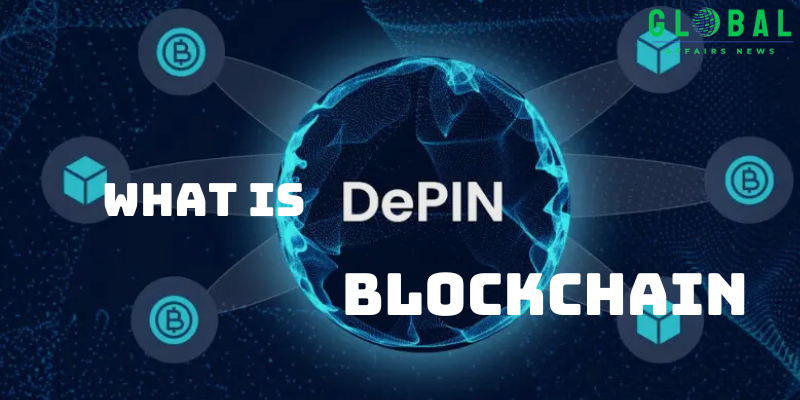What is DePIN in Blockchain? It’s a groundbreaking concept that combines blockchain with physical infrastructure to create decentralized networks. Discover how this model enhances transparency, security, and efficiency across various industries, transforming real-world infrastructure management.
What is DePIN in Blockchain?
DePIN, or Decentralized Physical Infrastructure Networks, is a cutting-edge concept that merges blockchain technology with physical infrastructure to create decentralized networks. This innovative model seeks to revolutionize how real-world infrastructure, like telecommunications, energy, storage, and more, is developed, maintained, and operated.
Unlike traditional systems, which depend on centralized entities, DePIN leverages decentralization to provide a more inclusive, efficient, and resilient approach to infrastructure management.

Key Features of DePIN
- Decentralization
One of the core principles of DePIN is the use of blockchain technology to decentralize control. In a DePIN network, the power is distributed across numerous participants, including users and service providers. This decentralization reduces the reliance on traditional centralized systems, enhancing inclusivity, security, and resilience while minimizing the risks associated with single points of failure. - Token Incentives
Participants in DePIN networks are rewarded for their contributions with tokens. Whether it’s providing resources, services, or infrastructure, the token economy encourages active participation and helps sustain the network. These tokens not only reward individuals for their involvement but also ensure the continued growth and stability of the decentralized infrastructure. - Transparency and Security
Blockchain’s transparency and security features are vital to the success of DePIN networks. Blockchain serves as a public ledger that records all interactions and transactions, ensuring an immutable, transparent record of all activities. Additionally, smart contracts automate processes such as payments, governance decisions, and service provisioning, further enhancing the network’s efficiency and trustworthiness. - Diverse Applications
DePIN networks can be applied across various sectors, providing decentralized solutions in industries such as telecommunications, renewable energy, cloud storage, and the Internet of Things (IoT). For example, in decentralized cloud storage networks like Filecoin, users can rent out their unused storage space and earn tokens in return. This is just one of many ways DePIN can be used to facilitate real-world infrastructure in a decentralized manner.
How DePIN Works?
- Physical Infrastructure
DePIN networks rely on tangible, physical assets to operate effectively. These can include mobile devices, solar panels, wireless access points, and other infrastructure elements that contribute to the network’s overall functionality. By leveraging these physical assets, DePIN helps build a decentralized network that doesn’t depend on centralized systems to manage and maintain the infrastructure. - Off-Chain Computing
To bridge the gap between real-world data and blockchain applications, DePIN utilizes off-chain computing solutions like oracles. These intermediaries bring off-chain data (physical world information) into the blockchain network, ensuring that the decentralized infrastructure can interact with the real world in a seamless and efficient manner. - Blockchain Architecture
Each DePIN operates on a specific blockchain that governs its smart contracts and token distribution mechanisms. This blockchain architecture ensures that every transaction, resource exchange, and governance decision is recorded securely and transparently. The decentralized nature of the blockchain enables all participants to trust the network’s integrity without relying on a central authority.
Challenges and Opportunities of DePIN in Blockchain
While DePIN in blockchain offers tremendous potential, it also faces several challenges. One key issue is the complexity of managing decentralized networks that rely on physical infrastructure. The maintenance and operation of physical assets may require significant coordination among participants. Ensuring that all contributors are incentivized fairly and that the network remains efficient can also be a challenge, especially as the network grows.
Additionally, scalability is another concern. As DePIN in blockchain networks expand to incorporate more physical infrastructure, they must ensure that the blockchain can handle large volumes of data and transactions efficiently. However, the growth of blockchain technology and improvements in scalability solutions, such as Layer 2 solutions, offer promising opportunities for overcoming these challenges.
What is DePIN in Blockchain? It is a concept that merges blockchain technology with physical infrastructure, creating decentralized networks. This model enhances transparency, security, and efficiency by allowing participants to contribute resources and earn tokens. DePIN in Blockchain offers a sustainable, inclusive approach to managing real-world infrastructure.
Follow us to stay updated on the latest in DePIN in Blockchain and other blockchain innovations!

